How To Tie Fishing Knots
Properly tying durable fishing knots is essential for successfully catching fish.
A weak fishing line knot will obviously be disappointing and devastating if you hook into a nice big fish, and then lose it due to a poorly tied knot in your fishing line. The last thing a fisherman wants is to hook into a fish and have the line snap or slip right at the knot.
Knowing how to properly tie knots that match up the best with any type of fishing line should give you little doubt that your knotted line will hold up against fighting some of the toughest fish.
Precise fishing line knot tying is a very important skill that all fishermen should take pride in learning to master. Having your very own personal fishing knot tying guide books and waterproof cardsBefore we begin with any knot tying tutorials, here are a few must know tips to help with tying the best possible knots...
4 Valuable Tips For Tying Fishing Line Knots
1.) Always moisten your line at the knot before completely cinching it down. Use water or saliva to moisten. Never put your mouth onto it because of the bacteria that is present in most rivers, lakes, streams, sloughs and ponds... you wouldn't want to get sick and not be able to fish for a week or two, right?
2.) Go slow and steady as you cinch down your knots. Cinching it too fast will create friction, which generates heat on the line, which weakens the line at the knot. If your fishing line and knot are weak, then your line will be more susceptible to breaking, especially with a big fish at the end of it.
3.) When your knot is complete, snip off the excess line of the tag end close to the knot, about 1/8th to 1/4 of an inch. No closer than an eighth of an inch to allow for any slippage that might occur. No longer than a fourth of an inch because you don't want any excess line looking obtrusive to turn off the fish, or interfering with the lures' presentation.
4.) If you're continuously casting and retrieving lures all day, be sure to take a moment every now and then to retie your fishing knots. Excess casting actually works the knot and weakens it. I know you just want to fish, fish and keep on fishing, but it would be a good idea to take a minute to retie. When you do retie, cut off a couple extra feet of line above the old knot, because that section of line most likely will contain abrasions and will be weak.
Knot Tying Instructions For Fishing Line
Are you ready to get naughty or not?... er' um, knotty?... I
mean, let's tie some knots, shall we?
Overhand Knot
This may seem like a silly demonstration for most of you. But there are quite a few people that aren't sure exactly what an overhand knot is. Sure, they have seen it, and use it regularly of course, but just might not know what it is when they hear the term "overhand knot".
It's the very first type of knot that all of us have learned to tie since day one.
So, here's a picture of it below... can you say "oh yeah, duh, I knew
that!"
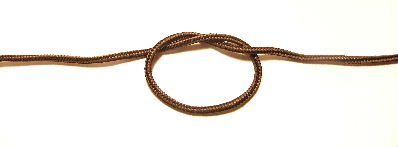 The Overhand Knot is the simplest and most common knot.
The Overhand Knot is the simplest and most common knot.By
the way, it's technically not considered an overhand knot
until and unless the ends are pulled tight and cinched down. As it
shows in the photo above, that is actually known as a "granny knot".
A Knot For Rigging Fishing Line To Your Reel
One of the first fishing knots that you're going to want to
know how to tie. It's an excellent knot for securing your fishing line
to the spool of your fishing reel.
Knots For Tying Fishing Line To Terminal Tackle
Also known as the Cinch Knot or the Fisherman's knot. It's
used to connect fishing line to the eye of a hook, lure or swivel.
An extended version of the regular clinch knot. It's basically
the same thing, just with one additional step added towards the end of
the tying process. The added step gives the knot a little more strength
and less opportunity for the knot to slip out.
This is a nifty way to be able to attach additional hooks away
from the end of your line. You can also use it to add flies or even
sinkers if you wanted to.
About one of the strongest fishing knots. It's quite easy to
tie and is great for connecting line to hooks, lures and swivels. More
than likely, your fishing line will break before this knot ever slips.
About the best fishing knots for tying line directly to
crankbaits and similar style lures. It contains a loop to allow the
lure to move freely with the shimmy shaking and wobbling the way they
are designed to move.
This is another easy one to learn. It's just like tying the
clinch knot, except there is an added loop to begin with.
Also called the Grinner Knot or the Duncan Loop, is a nice tough knot to have in your arsenal. Once you become familiar with this knot then it's quite easy and quick to tie.
Fishing Knots For Connecting Two Lines Together
This is more than just alright. It's a
good strong knot for joining two lines of different diameters. It also
has a low profile, streamline appearance which allows for smooth casts
without getting caught in the rod guides.
A nice way to join together two lines of
similar diameter. The strength of this knot relies a lot on the amount
of wraps. Many fly fishermen swear by this one because of it's
streamline appearance and that it doesn't bend at the knot as some of
the other knots do.
A very easy and simple knot to tie. It's not the prettiest, but it's strong. I recommend this one over the blood knot, and/or if you have trouble tying another for joining two lines together.
About the best and easiest knots to
tie for connecting to separate lines together with of similar
diameters. Many also call this the Double Uni Knot.
Fishing Knot Guide Books, Instruction Videos, Kindle
Editions and Waterproof Knot Cards
If you're serious about fishing, it's a good idea to learn
about which knots are best to use and for what.
Books and videos are perfect just for that. It can also be just as
helpful to carry a set of waterproof knot tying instructions with yourself
out on the water.
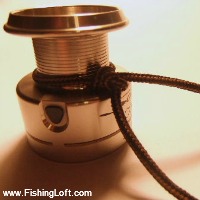
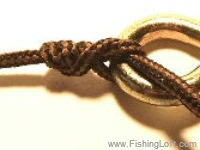
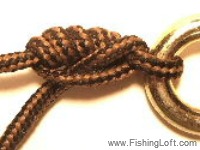
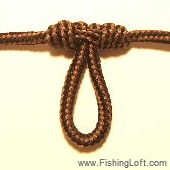



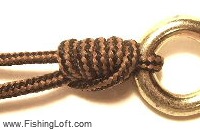
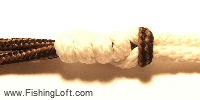
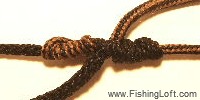
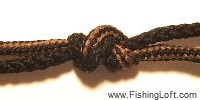


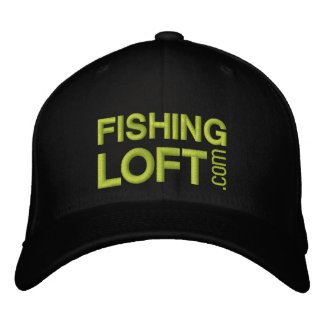




Facebook Comments
Leave a comment, question or tip in the box below.